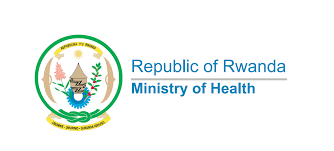You're currently viewing an old version of this dataset. To see the current version, click here.
HIV Testing Coverage and Positivity Trends 2019-2023
URL: (Login Required) Click to Access
Annual HIV testing data spanning 2019-2023 showing comprehensive testing service performance including total number of people tested, HIV positive cases identified, and HIV positivity rates. Enables trend analysis of HIV testing coverage expansion, case finding efficiency, and epidemiological surveillance over the five-year period.
Data structure includes: - Annual time series from 2019 to 2023 - Total number of people tested for HIV - Number of HIV positive cases identified - HIV positivity rate (percentage of positive tests) - Trend analysis capability for program monitoring
Additional Information
| Field | Value |
|---|---|
| Baseline Year | 2025 |
| Cover Image File | <FileStorage: '' ('application/octet-stream')> |
| Data Source | Rwanda Biomedical Center HIV Testing Services Database, Laboratory Information System (LIS), Health Management Information System (HMIS), HIV Testing and Counseling Records |
| Dimensions | - Time period (Annual data 2019-2023) - Testing metrics (Total tested, Positive cases, Positivity rates) - Geographic scope (National aggregation) - Service delivery approach (Facility-based, Community-based, Mobile testing) - Testing strategy (Provider-initiated, Client-initiated, Targeted testing) - Population categories (General population, Key populations, Pregnant women) - Age and gender disaggregation (when available in source data) |
| Indicator Code | RW-SCI-HIV-TEST-001 |
| Indicator Unit | Number of people tested, Number of positive cases, Percentage positivity rate |
| Methodology | Data collected through integrated HIV testing services monitoring system with multiple data sources and validation: HIV TESTING SERVICE DELIVERY: - Facility-based HIV testing and counseling (HTC) - Community-based testing services and outreach - Mobile testing units and campaign-based testing - Provider-initiated testing and counseling (PITC) - Self-testing and assisted partner testing - Index case testing and contact tracing DATA COLLECTION AND AGGREGATION: - Daily testing service recording at point of care - Laboratory confirmation and result recording - Monthly facility reporting through HMIS - Laboratory Information System integration - Community-based testing documentation and reporting QUALITY ASSURANCE: - HIV rapid test quality control and proficiency testing - Laboratory confirmation of reactive rapid tests - External quality assessment for testing sites - Data validation and consistency checks - Annual program review and data verification POSITIVITY RATE CALCULATION: - HIV Positivity Rate = (Number of HIV positive tests / Total number of HIV tests) × 100 - New positive case identification tracking - Repeat testing exclusion and unique individual counting - Trend analysis and epidemiological interpretation - Geographic and demographic disaggregation analysis PROGRAM MONITORING: - 95-95-95 target monitoring (95% diagnosed, 95% on treatment, 95% virally suppressed) - Testing coverage and gap analysis - Case finding efficiency and yield optimization - Population-specific testing strategy effectiveness - Integration with HIV care and treatment cascade monitoring |
| Reporting Org | Rwanda Biomedical Center (RBC) |
| Value Type | value |
